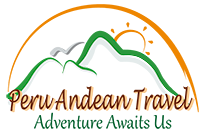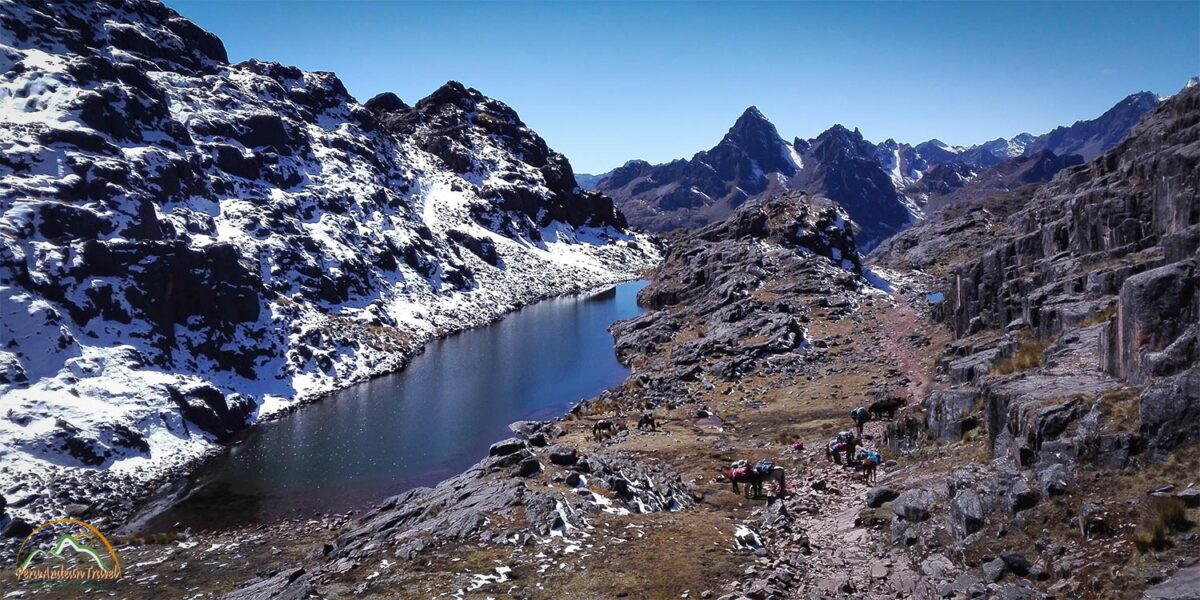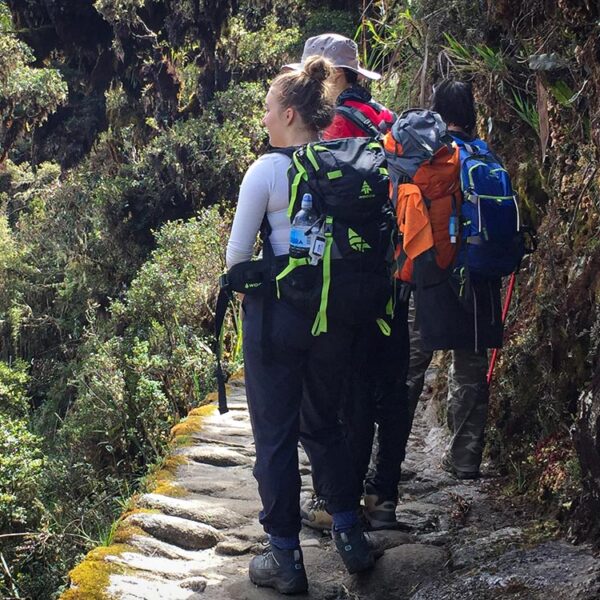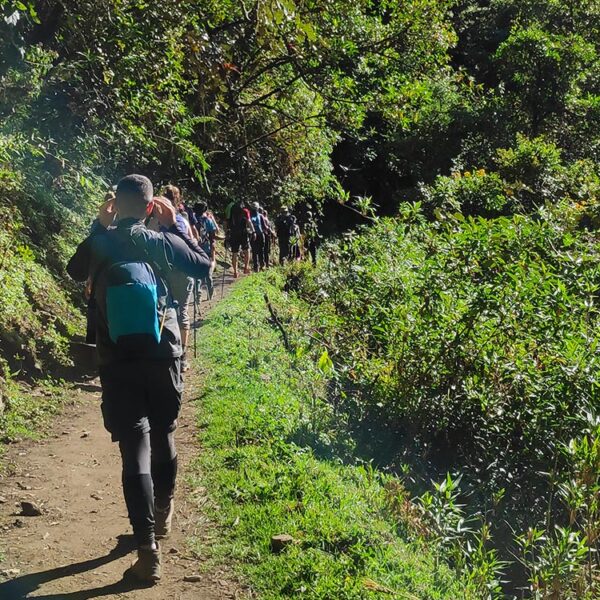Overview
Lares Trek to Machu Picchu 4 Days Overview
Lares is the name given to a small village in a valley of the same name, situated around 3 hours to the north of the city of Cusco. This is a traditional village hidden in the Andes, and for that reason still maintains customs and traditions from the Inca and colonial eras.
- Pickup Information: We will pick you up from your hotel in Cusco at around 6:00 AM.
- Average Hiking Duration: 6 to 7 hours per day.
- Maximum Elevation: 3,100 meters above sea level (10,170 feet)
- Minimum Elevation: 1,500 meters above sea level (4,921 feet)
- Location: Northwest of Cusco City
- Hike Distance: Approximately 28 kilometers one way.
- Visiting Season: Available year-round, with the best months being from March to November.
- Hiking Difficulty: Medium to Difficult.
- Return Information: We will return to Cusco on the fifth day, between 2:00 PM and 3:00 PM.
Itinerary
Itinerary Lares Trek to Machu Picchu 4 Days
Day 1: Cusco – Calca – Lares – Wacahuasi
Our adventure begins at 6:00am with a pickup from your hotel heading for the Sacred Valley. After one and half hours we arrive at the village of Calca, where we stop for a short while for any last minute shopping. We then continue our journey for around 2 more hours until we get to Lares, a small village located in the Peruvian Andes in the same region of Salkantay Trek. Here we find thermal baths of the same name, where we can enjoy a relaxing soak.
After enjoying the baths we will meet with the rest the team that will accompany us on this beautiful journey. They will have all of camping gear ready, which will be carried by horses. On this first day we will enjoy the Andean landscapes, the flora and fauna of the zone and at the end of the day have our first camp at the village of Wacahuasi.
Day 02: Wacahuasi – Ipsaycocha – Patacancha.
After a good breakfast, we will begin our trek past beautiful lakes and arrive at the highest point of the trail, with great views of the Vilcabamba mountain range. The highest point of the trek is Ipsaycocha (4,500 m / 14,764 ft), where we can enjoy great views of the tranquil lake of the same name (4,470 m / 14,665 ft). The people that live among these amazing landscapes have as their primary means of sustenance American camelids such as the Alpaca that provide meat and wool, and the Llama that they use as a pack animal to transport the few products that can be produced at this altitude.
In the afternoon we will arrive at Patacancha for our second camp, where we spend the night.
Day 3: Patacancha – Ollantaytambo – Aguas Calientes
After breakfast we will have time for a small ceremony with our cooks and horsemen that have accompanied us throughout the journey. After this, we continue on our way toward Ollantaytambo where we will have lunch and enroute pass through villages such as Huilloc, traditional places known for their manufacture of cloth and traditional outfits, usually red in color. We’ll also see Inca archaeological sites such as Huancaure and Hatunyanaorco. After lunch we head for the train station in Ollantaytambo, and take a train to Aguas Calientes.
Day 4: Aguas Calientes – Machu Picchu – Cusco
This morning we will eat our breakfast in the hotel and then take a bus to Machupicchu, taking around 20 minutes. We then have a guided tour for around one hour and thirty minutes, where our guide explains the history of the place and taking us to important places around the amazing Inca city.
After finishing this guided tour we will have time to look around Machupicchu on our own. Bear in mind that you have to be in the train station 30 minutes before the train leaves for Ollantaytambo, where we will be waiting with our transport to take you back to Cusco. Our services end here.
Included
Includes:
- Professional bilingual guide for the trek to (English-Spanish).
- Second bilingual guide for Machu picchu (English-Spanish. Private with 4 passengers or more).
- Cook.
- Horses to transport food, camping gear and personal belongings.
- Information briefing before the trip.
- Pickup from accommodation in Cusco and transport to Lares.
- Double tents (New equipment!) with foam mattresses.
- Camping gear, kitchen tent, dining tent, chairs, tables and toilet in all camps.
- All foods, snacks, tea and coffee.
- First aid kit and oxygen.
- Train from Ollantaytambo to Aguas Calientes.
- One night in a hostal in Aguas Calientes (doublé rooms).
- Bus ticket there and back, Aguas Calientes – Machu Picchu – Aguas Calientes.
- Entrance ticket to Machu pichu.
- Return train ticket to Cusco (Expedition service. If you wish to change the service or time, please let us know with anticipation).
- Transport from the train station to you lodgings in Cusco.
Not Included
Not Includes:
- Entrance to Waynapicchu ($20 pp extra).
- Breakfast on the first day. Lunch and dinner on the last day.
- Sleeping bag (these can be rented from Dos Manos)
- Entrance to the thermal baths on the first day.
- Tips for guides, cooks and horsemen.
Recommendations
WHAT TO BRING WITH YOU
- Backpack with different types of clothes needed for the whole trip.
- Waterproof walking shoes or boots.
- A small backpack for needed items during the day.
- Waterproof clothes, such as pants jacket or poncho for the rain (plastic ponchos can be bought in Cusco).
- Warm, comfortable, thick clothes, including a jacket especially for sleeping at night.
- Sleeping bag (can be rented from the agency at $5. A day).
- Mattresses will be provided by the agency, which you will carry.
- Flashlight with batteries.
- Camera with batteries (batteries are used faster in cold conditions).
- Water bottle and water for the first day, purification tablets for the whole trip. We provide filtered water for the kitchen.
- Hat or cap to protect from the sun and cold.
- Sun cream.
- Insect repellant with minimum 20% DEET.
- Moisturizing cream for face and body, after exposure to the sun.
- Toilet paper.
- Hankerchiefs.
- Snacks (cookies, energy bars, chocolate, dry fruit etc. We will provide snacks morning and night as the trip requires).
- Small towel.
- Bathing costume (if you wish to visit the thermal baths at Aguas Calientes).
- Cash in Sols or Dollars.
- Optional, walking sticks.





 4 Days
4 Days 







